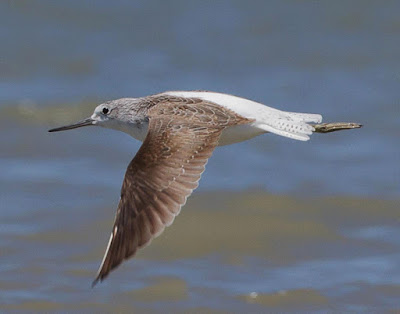Boreas the Greek God who brings winter winds tried his best to stop us leaving Skiathos on Tuesday night and early Wednesday. But by Wednesday lunchtime he’d run out of puff but the leftover headwind meant the plane had a flying start and didn't need a refuel at Kavala as planned. Most unusually, Manchester was bathed in sunshine when we landed an hour early.
There was some catching up for me when I met Andy at Oakenclough on Friday morning where the temperature hovered around 6° rather than the accustomed 25° of Greece.
In two weeks of my absence Andy had dodged the rain and caught over 250 birds with the usual good mix of species including Bullfinch, Meadow Pipits and yet more Mistle Trushes.
It was a similar story today with 33 captures of 12 species, only one of which was a recapture from recent days - 8 Chaffinch, 6 Meadow Pipit, 6 Goldfinch, 2 Mistle Thrush, 2 Chiffchaff, 2 Blackcap, 2 Dunnock, 1 Treecreeper, 1 Goldcrest, 1 Great Tit, 1 Blue Tit and 1 Song Thrush.
We have discovered that we can catch Mistle Thrushes up here in the Pennines, more so in the autumn when the species is on the move and when small parties or single birds pass overhead or stop off at our ringing site. These birds may be the remnants of post-breeding flocks that disperse towards the coast or lowlands for the winter whereby we have seen up to 60-80 on occasions. Equally they may be pure migrants from further afield but it is impossible to be sure to which category an individual belongs.
The six of this week have all been of first year/juvenile age.
Mistle Thrush
Mistle Thrush
The single Song Thrush (a first year/juvenile) seemed to have some weakness in the feather structure of both wing and tails. The outer primary feathers were very worn and faded while the tips and ends of every tail feather had completely worn away.
Song Thrush
Song Thrush
Song Thrush
90% or more of the Meadow Pipits we catch in the autumn are first year/juveniles with their characteristic mix of juvenile and post-partial moult feathers. Below is a fine example of an adult wing in September; this adult has completed a full moult so that all of the coverts, secondaries, primaries and tertials are of the same age and colour. The whole wing looks uniform across its width as opposed to a first year wing with a mix of feather ages. Similarly, each tail feather is new and fresh as well as wide at and near the tips. The tail of a September juvenile/first year is straggly, thin, and worn with a much more pointed appearance.
Meadow Pipit - adult
Meadow Pipit
The morning was rather clear with a good number of birds passing high overhead. Mostly, and from their calls they appeared to be Chaffinches, as confirmed by Chaffinch being the most ringed bird of the morning. Otherwise we caught not a single Redpoll or Siskin, but 3 Linnets seen here is very unusual.
Chaffinch
Take a look at that pointy tail – another first year/juvenile female Blackcap.
Blackcap
Chiffchaffs have been so scarce this year that it was most pleasing to catch two this morning. Both juvenile/ first years.
Chiffchaff
Birding in-between ringing clocked up lingering summer visitors in the shape of 4 Swallows and a single Yellow Wagtail.
Otherwise, 8 Pied Wagtail, 2 Great-spotted Woodpecker, Jay, Nuthatch, 5 Cormorant, 40 + Lapwing and 300+ Greylag Geese on and around the nearby reservoir.
Linking today with Anni's Blog and Eileen's Blogspot.
Linking today with Anni's Blog and Eileen's Blogspot.





















































































